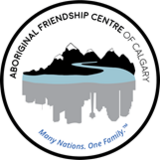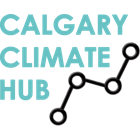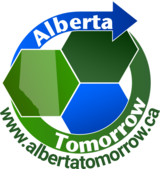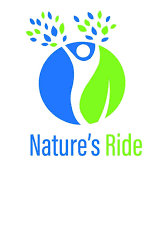Community Partner Challenges
We asked our organizations in the Calgary community to engage our students in finding solutions to challenges they are currently facing. This page outlines the challenges our students will be helping address in the Fall 2024 iteration of our Global Community Challenge YYC.

Aboriginal Friendship Center of Calgary
AFCC's Challenge:
The student team is tasked to create and develop an AFCC calendar template in Blackfoot. This calendar will promote our Indigenous sacred traditional teachings from our elders and knowledge keepers to help preserve the rich cultural histories, values, traditions, and language for our youth and furture generations. Calendars will be able to be ordered on the AFCC website, at community social and traditional gatherings and available to the general public.
AFCC's Challenge Goal:
Support community development focused on diversity, inclusion, and sustainability, through revenue generating initiatives that enhance AFCC capacity to provide cultural programming such as; families with young children, youth, elders, adults, and two spirit programming throughout the year.

Calgary Climate Hub
Calgary Climate Hub’s Challenge:
The student team is tasked with creating a set of recommendations on how to increase BIPOC and vulnerable population representation/involvement in climate change action in Calgary.
Included in these recommendations should be an investigation of:
• What are the clearest, most effective, and proven methods to increase marginalized and BIPOC communities in climate action?
• What intersectional climate change action tactics could be effective for increasing Calgary’s BIPOC and vulnerable population involvement?
• What are ways to demonstrate that climate change action will also help to improve one's quality of life, and economic situation? Backed with relevant data/evidence, and clear examples.
Calgary Climate Hub's Challenge Goal:
To increase Black, Indigenous, and people of color (BIPOC) and vulnerable population representation in climate change action in Calgary. With the recognition that marginalized and vulnerable populations are often the most impacted by the adverse effects of climate change, yet the lowest contributors to rising greenhouse gas emissions, and may be unable to participate directly in climate change action due to a variety of reasons.
While also considering that socio-economic inequities and sources of oppression are interconnected, which speaks to a broader concept of intersectionality. Intersectionality outlines how various social and political identities work to create unique combinations of discrimination and privilege, and this concept is key when considering substantive responses to climate issues.
Meaningful climate mitigation, adaptation, and related responses must be citizen led and rooted in Climate Justice. Which is an intersectional approach to climate action that focuses on the unequal impacts of climate change on marginalized and vulnerable populations, and seeks to achieve an equitable distribution of both the burdens of climate change and the efforts to meaningfully mitigate and adapt to climate change.
The Aboriginal Friendship Centre of Calgary is part of a national program of 119 friendship centres. True to its origins it provides specialized services to support aboriginal people in urban areas. Programs and services offered at Friendship Centres include: Culture, Family, Youth, Sports and Recreation, Language, Justice, Housing, Health, Education, Employment, Economic Development and a variety of miscellaneous projects ranging from social activities to community building initiatives and special events.
Vision Statement
We remove barriers and empower our urban community through cultural reconnection, programs,services and access to resources that address the social and economic realities of our people.
Mission Statement
Providing Indigenous cultural connection through programs and services for the urban population.
The Calgary Climate Hub (the Hub) is a volunteer-led, non-profit organization that unites a diverse group of Calgarians committed to working together to support meaningful local action on climate change. We represent a variety of communities, industries, cultures and causes. Our core values include the following: non-partisan, evidence-based, collaborative, diverse, and volunteer-led.
Vision: Calgary is a leader on climate action.
Mission: We educate and empower Calgarians to become active climate citizens.
We operate on a hub-and-spokes model, with an elected board. Volunteers take on specific tasks such as communications, supporting our website, or running campaigns. A small team of contractors supports our programming, volunteer coordination and administration.

Alinea International
Alinea International's Challenge:
Students are asked, what international best practices in environmental peacebuilding between indigenous people, women, and environmental and other government authorities could be applied to the Andean context?
Alinea International's Challenge Goal:
The Global Community Challenge will work within the context of one of Alinea's new international cooperation projects, funded by the Government of Canada that aims to enhance the empowerment of women, including women of Indigenous heritage, to conserve highland wetland and peatland ecosystems for increased climate resilience in Bolivia, Ecuador, and Peru. The Project contributes to Canada's $5.3 billion international climate finance commitment.

Light Up The World
LUTW's Challenge:
Students are asked to use the ideas and observations gathered in the Peru project to complete a feasibility study to replicate what is being done in Peru here in Alberta specifically for indigenous remote communities with no access to internet and limited clean solar energy. Students will gather information from stories and observations online and present findings about challenges faced by communities in Alberta.
LUTW's Challenge Goal:
With a focus on training local technicians and developing the capacity of local service providers, LUTW fosters long-term partnerships so that communities are empowered to move towards a more sustainable future. In 1997, Dr. Dave Irvine-Halliday, a Professor of Electrical Engineering at the University of Calgary, had the vision to use LED lighting to bring practical, economical, and environmentally safe lighting to the developing world. While on sabbatical in Nepal, Dave visited local villages and was struck by the poor conditions that people lived in. Most of them were relying on kerosene lamps which produced little light and filled the homes with dangerous, toxic smoke. As the annual income of the Nepalese villagers averaged $200 USD, Dr. Irvine-Halliday realized that there was a great need for simple, safe, healthy, affordable and rugged lighting. Based on these ideas and findings projects were developed in other countries with similar challenges. Peru is one of these countries.
Alinea is an international development consultancy with nearly 40 years of experience.
Alinea provides technical and management expertise that helps people improve their lives, characterized by: teamwork, results-based project design, sustainability, participatory methodologies and local input and ownership.
Alinea works with governments, investors, companies and communities to create verifiable and sustainable change. Over the past 35 years, we have successfully delivered more than 515 projects worldwide.
MIssion
Inspired and governed by the United Nations Sustainable Development Goals, Alinea's mission is to catalyze opportunity as partners in international development, providing our best people and expertise to contribute to sustainable economic, social and environmental development.
Light Up The World (LUTW) is a Canadian registered charity dedicated to the idea that access to energy changes lives. We work in remote off-grid communities that lack the basic technologies that many of us take for granted. By providing these communities with solar photovoltaic systems, We make a lifelong impact on our beneficiaries by helping them transition away from using polluting fuel-based lighting and costly single-use batteries and unlocking the opportunity to use technologies and tools to help them on their everyday life.

Alberta Tomorrow Foundation
Alberta Tomorrow's Challenge #1:
The students are asked to develop a mock up of a 5 minute simulator using the current full length version as a basis, which provides an immersive experience into land use and its positive and negative impacts in Alberta. One idea to explore is a computer simulation flyover of AB where hot spots would provide info and challenges.
Alberta Tomorrow's Challenge #1 Goal:
Our current version of the www.albertatomorrow.ca simulator provides an immersive experience into land use and its positive and negative impacts in Alberta. We want to develop a 5 minute simulator that is intended to be incorporated into Kiosks to use in libraries/museums. Through these simulators users can learn some key information about land use in Alberta, and be motivated to find out more, with a call to action of what they can do to make a better future for Alberta. Possibly a computer simulation flyover of AB where hot spots would provide info and challenges.

Alberta Tomorrow Foundation
Alberta Tomorrow's Challenge #2:
The student team is challenged with innovating ways in which we can measure the impact that the land use environmental simulator has on it's users views, beliefs and behaviours, considering the calls to action that are embedded within the simulator experience.
Alberta Tomorrow's Challenge #2 Goal:
As an free online tool, we know numbers of users, time spent on pages etc. But how to we measure the actual impact the simulator has on users views, beliefs and behaviours? Funders often ask us how we will measure impact? We would like a way to measure impact that isn't just a pre and post usage survey (most surveys are never returned).
Alberta Tomorrow has been around since 2003, with a mission of delivering a platform that empowers youth to design and sustain a future for our shared ecosystems and a vision of an informed society actively fostering sustainable futures. Through our free online Global Information Systems (GIS) based land use simulator, we have helped tens of thousands of users understand the complexities of land use planning that takes into account environmental, social, and economic values of society, as well as including Indigenous Voices in land use planning.
Alberta Tomorrow has been around since 2003, with a mission of delivering a platform that empowers youth to design and sustain a future for our shared ecosystems and a vision of an informed society actively fostering sustainable futures. Through our free online Global Information Systems (GIS) based land use simulator, we have helped tens of thousands of users understand the complexities of land use planning that takes into account environmental, social, and economic values of society, as well as including Indigenous Voices in land use planning.

Calgary Scope Society and The Disability Action Hall
Calgary Scope Society and The Disability Action Hall's Challenge:
The student team is tasked to compile a portfolio of impactful messaging that challenges societal attitudinal, physical, policy, communication, and social barriers.
This can be achieved through:
• an in-depth look at best practices worldwide in which messaging has been a tool to help facilitate greater shared culture, identity and understanding;
• a look at media campaigns aimed at a broad audience including commercials, advertisements, stories, films and Instagrams of disability pride and culture that are preferably created and authored by persons with disabilities aimed at mainstream society;
• local public testimonies from lived experiences.
Calgary Scope Society and The Disability Action Hall's Challenge Goal:
To influence the attitudinal thinking and awareness of university students who are aspiring professionals in areas that will shape future spaces, policies, programs and services. To instill professional mindfulness of their future contribution, to ways our society and community promote better lives for people marginalized by disability and mental health including those who also identify with the Two-Spirit, Lesbian, Gay, Bisexual, Transgender, Queer and/or Questioning, Intersex, Asexual, and the plus (2SLGTBQIA+), Black, Indigenous, and people of colour (BIPOC). Considering that equitable access to safe and welcoming services and support when living with a disability and mental health, can also be compounded when a person may also identify as 2SLGTBQIA+ or are BIPOC.

Centre for Newcomers
CFN’s Challenge:
The student team is asked to create a Sponsorship Package, relating the United Nations Sustainable Development Goals (SDG's) to CFN’s work supporting newcomers and refugees, which serves to educate Corporations on the importance of the UN SDGs, and draws them to invest their community funds in the Centre for Newcomers.
CFN’s Challenge Goal:
Within the private sector, corporations are responding to investor influence by aligning their Environmental, Social, and Governance Frameworks with impact on the United Nations Sustainable Development Goals. Centre for Newcomers can be a valuable contributor for corporations in achieving their sustainability targets.
The Calgary SCOPE Society is a nonprofit organization that has supported individuals of all ages with developmental disabilities for over 40 years.
Mission Statement
"The Calgary SCOPE Society works in alliance with people with disabilities, their families and friends, and other community members to understand problems and create solutions to personal and social justice issues."
The Disability Action Hall is a proud disability community that has been telling our stories, taking action, and changing lives since 1998. We work on disability pride and culture, relationships and networking, enough money for all, a home for all and services people need.
Since 1988 the Centre for Newcomers (CFN) has been a key resource for immigrants and refugees of all nationalities in Calgary. A social profit organization, CFN views the integration of newcomers as a two-way process of experience, influence and impact between newcomers and the communities that welcome them.
Our mission is to support newcomers and the receiving community in becoming a diverse, united community, through services and initiatives that create conditions of success for newcomers and that foster a welcoming environment in Calgary. We believe that by welcoming newcomers, and supporting them to settle and integrate, by working collaboratively and in partnership, with a workplace culture that is founded on respect, co-operation and trust, we are making a positive difference in the lives of all Calgarians and the community.

Glenbow
Glenbow's Challenge #1:
For this challenge the student team is asked to research and provide recommendations on ways the museum can approach offering a meaningful free experience for visitors while maximizing revenue potential.
The first deliverable in this ask is to identify different potential visitor profiles ensuring consideration of the needs of those diverse visitor segments. These profiles can then be used to identify the elements/ supports that should be part of the free admission so different visitor profiles have an equitable opportunity for a meaningful experience. The profiles can then inform the recommendations of the elements/supports the Glonbow can offer as extras to generate revenue.
Glenbow's Challenge Goal #1:
The Glenbow Museum is transitioning into offering free admission to the museum; the organization is also looking for ways to earn revenue from its visitors without sacrificing their overall free experience. We are exploring visitor revenue sources that don’t cause them to feel like they received free admission but are then being asked to pay unexpectedly for enhancements to the service.

Glenbow
Glenbow's Challenge #2:
The student team is challenged with proposing a strategy that will draw in a maximum return of revenue with comparatively minimal investment of resources, assuming a high volume of visitors and lends itself to strong experience ratings. Should their approach be low yield revenue from a high volume of visitors? Would that approach be suitable for all these peripheral revenue generating activities?
Glenbow's Challenge Goal #2:
While entry to the museum will be without charge, the Glenbow will continue to operate peripheral activities to generate revenue such as programming, donations, a restaurant, gift shop, and service enhancements. As the Glenbow designs their revenue strategy for these different activities it is important to determine who is and how to cater to the most valuable visitor from an earned revenue perspective.
Founded in 1966 as an independent, non-profit museum, archive and gallery, Glenbow cares for an extraordinary collection of more than 250,000 works of art and historical belongings – from Canada and cultures around the world – on behalf of the people of Alberta. Glenbow Reimagined is a project to renovate the museum’s 50-year-old building and provide a vibrant, thriving cultural resource in the heart of Calgary, committed to expanding the accessibility and impact of arts and culture. Glenbow’s main building is closed as it renovates to become the JR Shaw Centre for Arts & Culture. While renovations are underway, visitors can experience exhibitions at the museum’s satellite gallery, Glenbow at The Edison.
Glenbow Mission
Our mission is to activate art, objects, and ideas so everyone who experiences Glenbow leaves with something to share.
Founded in 1966 as an independent, non-profit museum, archive and gallery, Glenbow cares for an extraordinary collection of more than 250,000 works of art and historical belongings – from Canada and cultures around the world – on behalf of the people of Alberta. Glenbow Reimagined is a project to renovate the museum’s 50-year-old building and provide a vibrant, thriving cultural resource in the heart of Calgary, committed to expanding the accessibility and impact of arts and culture. Glenbow’s main building is closed as it renovates to become the JR Shaw Centre for Arts & Culture. While renovations are underway, visitors can experience exhibitions at the museum’s satellite gallery, Glenbow at The Edison.
Glenbow Mission
Our mission is to activate art, objects, and ideas so everyone who experiences Glenbow leaves with something to share.

End of the Rainbow Foundation
End of the Rainbow’s Challenge:
The student team is tasked with devising novel solution(s), beyond the current support groups and mentor services, with the aim of reducing the barriers for participation that have been observed among the LGBTQ+ Refugee claimants arriving over the past 12 months.
End of the Rainbow Foundation’s Challenge Goal:
To enhance our capacity to address the global inequities that LGBTQ+ refugee claimants face and increase support for equity deserving communities. The past year global persecution of LGBTQI+ people has increased in certain parts of the world contributing to a steep rise in refugee claimants accessing our services. Refugee claimants are ineligible for many programs offered to newcomers, many of them have been living in the shelter system and have been focused on basic survival needs. The policies and procedures of the local shelters, as well as the jobs available to the refugee claimants, create significant barriers to accessing programs, services and 2SLGBTQ+ community spaces and events, especially in the first few months post arrival when they are most isolated and lacking community supports.

Nature's Ride Society
Nature’s Ride Society's Challenge:
The student team is challenged to prepare an assessment of how Nature’s Ride can leverage the resources associated with the AgriSolar Shelter and community hall to engage the local community.
Included in the assessment should be:
• a sustainability analysis and;
• recommended Key Performance Indicators (KPIs).
The following is a description and context of the opportunity:
The impacts of climate change, along with the prevalence of food insecurity and energy access are among the most challenging and complex issues of our times. Extending the food growing season throughout Canada requires shelters that can protect crops from extreme temperatures and adverse weather such as hail, frost, snow and wind. For potential year-round crop production, energy is required for heating and lighting. At community food gardens, this energy must be delivered at the lowest cost possible to maintain affordable access. The AgriSolar Shelter addresses these challenges and provides a sheltered space for building climate, food and energy resilience that can be applied in communities everywhere.
The CA and Nature’s Ride, with support from the AgriSolar Shelters Initiative, would collaborate in fundraising for the capital cost of a proposed 480 square foot (44.6 square meter) AgriSolar Shelter, with ownership residing with the CA.
A nominal annual rent would be paid by Nature’s Ride to the CA for use of the shelter, with community hall rentals as required for workshops paid on a discounted rate. Energy from the Solar PV system would be connected to the community hall and electricity to/from the community hall would be sub-metered for energy performance monitoring. The CA would be responsible for the energy bills and receive any net benefit from the solar PV system. Food production from the sheltered garden would be donated to the Calgary Food Bank, with record keeping of total weight for performance monitoring.
Nature’s Ride Society's Challenge Goal:
Nature's Ride is considering whether to participate in a collaborative relationship with a Community Association (CA) to build a sheltered garden, near their community hall, that provides the basis for workshops conducted by Nature’s Ride. As part of this decision-making process, Nature’s Ride needs to assess the extent of the opportunity to engage (it’s core audience segment within) the local community, using the resources associated with the sheltered garden and community hall.
End of the Rainbow Foundation creates sponsorship circles (groups of five), hosts support groups, and provides education to help LGBTQ+ people settle in their homes and community.
End of the Rainbow Foundation's mission is to improve socioeconomic conditions for people of diverse sexual orientations and gender identities or expressions (SOGIE) by providing innovative education, support programs, and research, whether they are longtime citizens, or new Canadian refugees, or immigrants.
Nature’s Ride Society is a Calgary-based non-profit society that engages and empowers children of all ages in fun, exciting and informative activities connected to the environment. Programs created by Nature’s Ride are developed by environmental specialists to provide innovative and experiential learning. These programs provide messages of environmental stewardship, and supplement Alberta government science and art curriculum.
